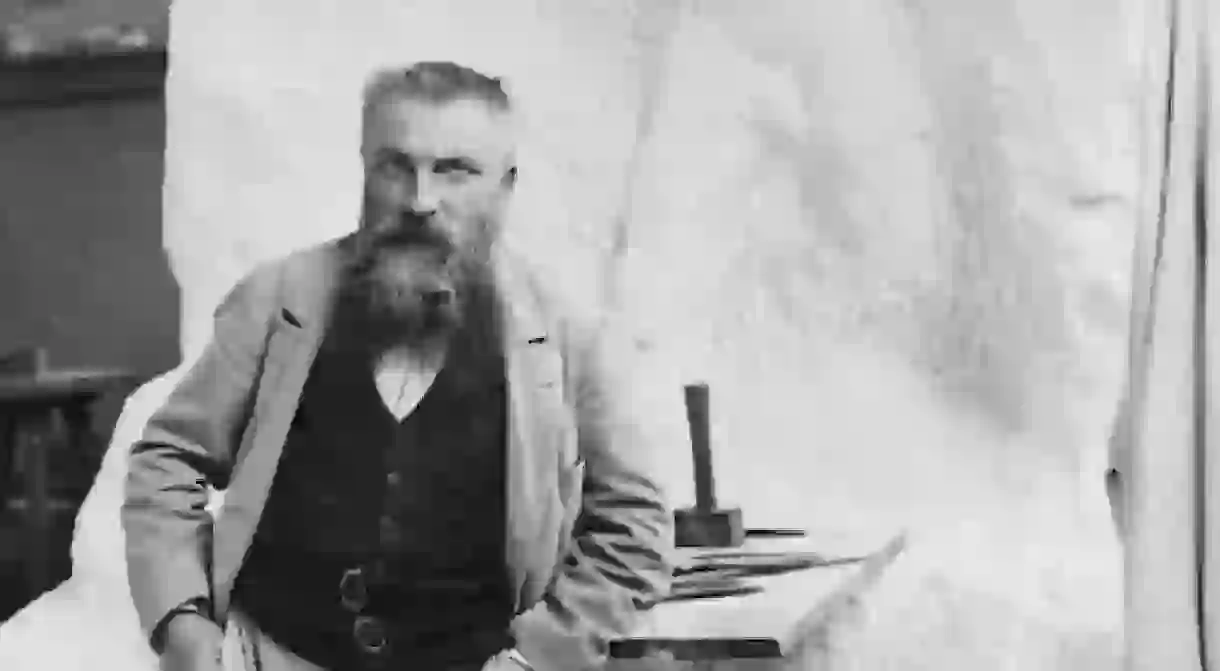8 Works By Auguste Rodin: Anguish And Ecstasy

Auguste Rodin was a late 19th-century French sculptor with an unwavering devotion to naturalism and the pure anatomic form. He is known for his pygmalion-esque skills and evocative figures, often in the throes of ecstasy or anguish, which were considered revolutionary during his time. Here is a selection of eight works representative of the master’s output.
The Eternal Idol, 1890-1893
You may recognize The Eternal Idol from the cover of the eponymous Black Sabbath album. The scene was derived from smaller figures on The Gates of Hell, as many other of Rodin’s statues were. The Eternal Idol was originally cast in bronze and then marble and was created without any title in mind, as Rodin was consumed by devastating form rather than poetic titles.

The Kiss, 1882
Many of the titles for Rodin’s statues were actually created by eager journalists who would wander into his studio and make suggestions, which he casually accepted. Such was the case for The Kiss, perhaps one of Rodin’s best known works. The figures were originally part of The Gates of Hell, and the enlarged version was deemed scandalous for expressing female ardor. Despite its name, the couple’s lips don’t actually meet.

The Gates of Hell, 1880-1917 (his death)
In 1880, the Directorate of Fine Arts commissioned Rodin to create the entrance to a Decorative Arts Museum. Perhaps the idea of decorative arts seemed hellish, as the design that ensued was a 37-year process of creating Dante’s Inferno. Many of his larger works were derived from smaller figures in the gates, creating figures in circles of hell that questioned the boundaries of anatomy and expressiveness.

Eternal Springtime, 1884
Another ‘eternal’ pair, the tension within the pose of the Eternal Springtime is extremely sensual. So much so, in fact, that it was taken from The Gates of Hell because the figures looked far too euphoric, accentuated by the decadent arches in her back and strained male torso. Rodin did not only mold stationary models; instead, he often had dancers wandering at their will around his studio because of their heightened anatomical capabilities.

The Three Shades, 1886
According to Dante, the souls of the damned stand at the entrance to Hell, atop a plaque that reads, ‘abandon hope, all ye who enter here.’ Rodin was a firm believer that a man’s nature is visible in his body, and so this distorted trio, almost uncanny with their horizontally splayed shoulders and rhyming composition, were created to embody the anguish of entering Hell.

The Thinker, 1903
The Thinker is speculated to be Rodin’s embodiment of Dante Alighieri sitting atop The Gates of Hell; however, this interpretation is widely disputed. The figure was initially called The Poet and is often used as a symbol for philosophy and intellect. The powerfully built and heroic body harkens back to Michelangelo‘s sculpture of Lorenzo de Medici and was designed to be viewed from below.

The Burghers of Calais, 1884-1889
Les Bourgeois de Calais harkens back to an event during the Hundred Years’ War when Edward III offered to spare Calais if any six of its leaders would come forth for execution. Rodin’s interpretation was deemed controversial because of the non-heroic depiction, devoid of pyramidal composition, robust figures, and even a pedestal originally. However, Rodin conveyed a sense of trepidation and anguish that he deemed just as noble as a display of brash courage.

The Age of Bronze, 1877
The Age of Bronze (originally cast in bronze) caused quite a scandal upon its unveiling. Rodin carved it so meticulously in the image of his model, Auguste Ney, that many critics suggested that he had done a live cast instead of carving it by hand. Outraged, Rodin proved the veracity of his work and was celebrated for his breathtaking technical skill.














